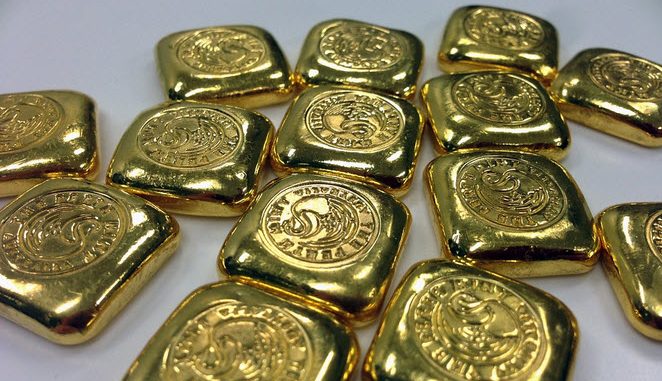
New research has revealed that special enzymes help the bacterium Cupriavidus metallidurans transform toxic versions of gold into inert solid gold. The inert solid gold then leaves the bacterium in the form o tiny gold nuggets.
C. metallidurans is a soil-living rod-shaped bacterium famous for its ability to survive among toxic heavy metals. As far back as 2009, molecular microbiologist Dietrick Nies and his team discovered that this bacterium was capable of depositing solid gold, but they didn’t know how and why so they continued their research to shed more light on this amazing little gold pooper.
“When confronted with ever more gold, some bacterial cells are completely encased with gold,” says Nies, a molecular microbiologist at Martin Luther University in Germany. “At most, these gold shells are mere micrometers in size, but they can aggregate into sand-grain-size chunks.”
Two membranes and an enzyme
The continued research into C. metallidurans revealed that it was surrounded by two membranes with a space between them. This type of space is called the periplasm. The research also showed that the bacterium is using an enzyme called CupA to pump copper from the interior of the cell to the periplasm.
C. metallidurans needs small amounts of copper for its metabolic processes, but too much copper is toxic. So, the solution for this bacteria is to use the enzyme CupA to move excess copper into the periplasm where it can not hurt the bacterium.
Gold
Gold ions is a problem for C. metallidurans because move easily through both cellular membranes and can cause injury when they reach the interior of the cell. To make things worse, the gold ions also inhibit the CupA pump, preventing the bacterium from getting rid of excess copper in the normal fashion.
So, what to do? C. metallidurans has solved the issue using another enzyme: CopA.
CopA steals electrons from copper ions and gold ions, thus transforming them into stable metals. These stable metals can not easily pass through the interior membrane of the cell, so the interior remains protected.
“Once the metallic gold nanoparticles [are] formed in the periplasm, they are immobilized and less toxic,” Nies explains.
Of course, eventually the periplasm will get full of metal, and this metal must be removed to make space for new metal. To allow for this, the bacterium will split its outer membrane and metal nuggets will fall out.
Read more
The article was published in the journal Metallomics in January 2017.
Synergistic gold–copper detoxification at the core of gold biomineralisation in Cupriavidus metallidurans
Authors:
- L. Bütof, Molecular Microbiology, Institute for Biology/Microbiology, Martin-Luther-University Halle-Wittenberg, Germany
- N. Wiesemann, Molecular Microbiology, Institute for Biology/Microbiology, Martin-Luther-University Halle-Wittenberg, Germany
- M. Herzberg, Molecular Microbiology, Institute for Biology/Microbiology, Martin-Luther-University Halle-Wittenberg, Germany
- M. Altzschner, Walter Schottky Institut and Physik-Department, Technical University Munich, Garching, Germany
- A. Holleitner, Walter Schottky Institut and Physik-Department, Technical University Munich, Garching, Germany
- F. Reith, The University of Adelaide, School of Biological Sciences, Adelaide, Australia
- D. H. Nies, Molecular Microbiology, Institute for Biology/Microbiology, Martin-Luther-University Halle-Wittenberg, Germany
